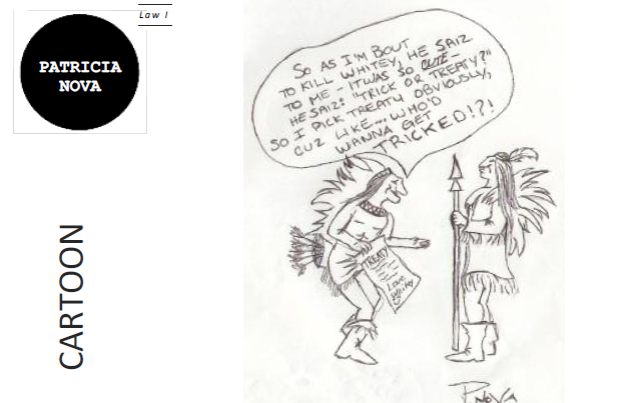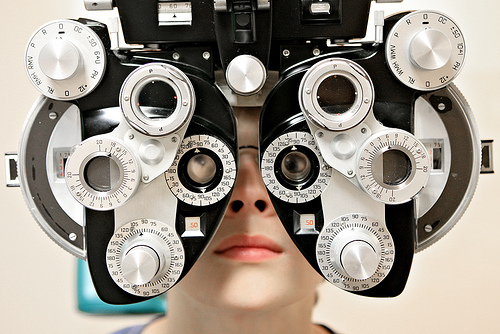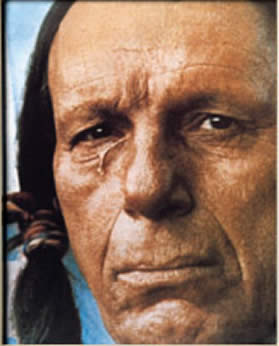I still intend to get a series of posts out clarifying issues like First Nations housing, health-care, education and so on, but I have a confession. I haven’t been staying away from the comments sections of articles about Attawapiskat.
I know. It’s not healthy. There are so many racist rants and outright ignorant responses that it can bog you down. Where do you even begin, when the people making these comments do not seem to understand even the bare minimum about the subject?
Well, I try to answer questions with facts. Here are some of those facts, if you’re interested.
Harper said Attawapiskat got $90 million, where did it all go!?
Yes, Prime Minister Harper is apparently scratching his head about where $90 million in federal funding to Attawapiskat has gone. Many commentators then go on to make claims about lack of accountability, and no one knowing what happens to the money once it is ‘handed over’ by the Federal government.
Let’s start simple.
First, please note that $90 million is a deceptive number. It refers to federal funding received since Harper’s government came into power in 2006. In the 2010-2011 fiscal year, Attawapiskat received $17.6 million in federal funds (PDF). The document linked to shows the breakdown of federal funds in case you wanted to know how much is allocated to things like medical transportation, education, maternal health care and so on.
Thus, $90 million refers to the total of an average of about $18 million per year in federal funding since 2006.
[As an aside, you will often see the figure of $34 or $35 million in funding given to Attawapiskat a year. This actually refers to total revenues. As noted, federal funding was $17.6 million, and provincial funding was $4.4 million. The community brings in about $12 million of its own revenue, as shown here. So no, the ‘government’ is not giving Attawapiskat $34 million a year.]
Okay fine, but where did it go?
Attawapiskat publishes its financial statements going back to 2005. If you want to know where the money was spent, you can look in the audited financial reports. This document (PDF) for example provides a breakdown of all program funding.
Just getting to this stage alone proves false the claim that there is no accountability and no one knows where the money goes.
But $90 million could have built the community 360 brand new houses!!
Assuming, as Grand Chief Stan Louttit of the Mushkegowyk Council has stated, that a new house costs $250,000 to build in Attawapiskat (with half of that being transportation costs), then yes, 360 new units could have been provided by $90 million.
However, this money was not just earmarked for the construction of new homes.
An important fact that many commentators forget (or are unaware of) is that section 91(24) of the Constitution Act of 1867 gives the Federal Crown exclusive powers over “Indians, and Lands reserved for the Indians.”
You see, for non-natives, the provinces are in charge of funding things like education, health-care, social services and so on. For example, the Province of Ontario allocated $10,730 in education funding per non-native pupil in the 2010-2011 fiscal year. For most First Nations, particularly those on reserve, the federal government through INAC is responsible for providing funds for native education.
How is this relevant?
It helps explain why the entire $90 million was not allocated to the construction of new houses. That $90 million includes funding for things like:
- education per pupil
- education infrastructure (maintenance, repair, teacher salaries, etc)
- health-care per patient
- health-care, infrastructure (clinics, staff, access to services outside the community in the absence of facilities on reserve)
- social services (facilities, staff, etc)
- infrastructure (maintenance and construction)
- a myriad of other services
These costs are often not taken into account when attempting to compare a First Nation reserve to a non-native municipality. In fact, many people forget that their own health-care and education are heavily subsidised by tax dollars as well.
What’s the point here?
How much money was actually allocated to housing in 2010-2011? Page 2 of Schedule A (PDF) shows us that out of the $17.6 million in federal funds, only $2 million was provided for housing. Yes, even $2 million would be enough to 8 brand new homes, if those funds were not also used to maintain and repair existing homes. The specific breakdown of how that money was spent is found in Schedule I.
Now, I admit I am confused about something. The Harper article states:
According to figures providing by Aboriginal Affairs, the Attawapiskat Cree band has received just over $3 million in funds specifically for housing and a further $2.8 million in infrastructure money since 2006.
That is actually less than I estimated it would be, going by the 2010-2011 figures. I estimated $10 million for housing, but INAC (now Aboriginal Affairs) is saying it was $5.8 million.
Anyway, that isn’t too important. The point is, if INAC is correct, only $5.8 million has gone towards housing for Attawapiskat. At most that could have built the community 23 new houses, if Attawapiskat had merely let the older houses go without any repairs or maintenance for 5 years. Letting existing homes go like that is not a great strategy, however.
The point here is, $90 million sounds like a huge amount, but the real figures allocated to housing are much, much smaller.
Fine, they got $5.8 million for housing, surely that is enough?
Again, assuming 23 new homes were built, and all older homes were left without maintenance and repairs, and the people in charge of housing worked for free and there were no other costs associated with administering the housing program, Attawapiskat would still be experiencing a housing crisis.
It is estimated that $84 million is needed for housing alone to meet Attawapiskat’s housing needs (you’ll find those figures in a small table on the right, titled “Attawapiskat by the numbers”).
The Feds are just handing that money over and the Band does whatever it wants with it!
Many people seem to be labouring under the misapprehension that First Nations have self-governance and run themselves freely. This is far from the truth, but given that most Canadians are familiar with the municipal model, the confusion is actually understandable. It isn’t as though Canada does a very good job of teaching people about the Indian Act.
CLARIFICATION AND CORRECTION, Dec. 7
I am going to quote the following so that what I originally said is still viewable here. After the quote I am going to correct a factual error and clarify the issue. My apologies for not getting to this sooner!
Section 61(1)(a-k) of the Indian Act details that: “With the consent of the council of a band, the Minister may authorize and direct the expenditure of capital moneys of the band” for various purposes.
What this means is that Ministerial approval is actually a requirement before any capital expenditures can occur on reserve. In practice, a Band will generally pass a Band Council Resolution (BCR) authorising a certain expenditure (say on housing), and that BCR must be forwarded to INAC for approval.
CORRECTION:
First of all, I was actually quoting section 64(1)(a-k) of the Indian Act, not section 61. This section allows the Band to empower the Minister to make capital expenditures on behalf of the Band, and does not require the Minister to okay all Band expenditures. My apologies for this error, made in haste when this was initially posted.
CLARIFICATION:
The above does not mean that there is not federal oversight, however.
Federal control of expenditures is exercised through a variety of very restrictive funding mechanisms, a major one of which is contribution agreements.
To give you a sense of what contribution agreements are and how they work, I’m going to use Health Canada Contribution Agreements as an example. The following quote explains what the contribution agreement is and what the requirements are: (bolding my own)
- It is the basis on which Health Canada will monitor your progress and assess your claims for payment;
- It specifies the maximum federal contribution and what activities are eligible for funding;
- It outlines the objectives of the project and how they will be measured and identifies the deliverables;
- It tells you how often you must submit progress reports and claims; etc…
Please also note this quote:
When you receive a cheque depends on when you submit progress and financial reports
Health Canada cannot issue a payment until you properly account for expenditures through a claim submission and progress report.
Similar spending restrictions and reporting requirements exist in contribution agreements between Bands and INAC as well.
That’s right. Most First Nations have to get permission before they can spend money. CLARIFICATION: This does not equate to individual approval for each separate expense, but rather involves very specific expenditure restrictions laid out in formal agreements. Not only that, but Bands must submit regular and detailed reports in order to continue to receive funding. That is the opposite of ‘doing whatever they want’ with the money. Bands are micromanaged to an extent unseen in nearly any other context that does not involve a minor or someone who lacks capacity due to mental disability.
Any claims that INAC has no control over what Bands spend their money on is false.
I would hope by now you’d ask the following question:
If INAC has to approve spending, why is Harper so confused?
There is a tendency to believe that our government officials do things in a way that makes sense. This, despite the fact that most of us don’t actually believe this to be true. We want to believe. I know I do.
So upon learning that the federal government is the one in charge of providing services to First Nations that are provided to non-natives by the province, we might assume that the provision of these services are administered in a comparable manner.
Not so! And it actually makes sense why not, when you think about it for a moment. Have you ever seen a federal hospital, for example? No, because hospitals are built, maintained, and staffed by the provinces. Thus, when a First Nations person needs to access health-care, they cannot access federal infrastructure. They must access provincial infrastructure and have the feds rather than the province pick up the tab.
If only it were as easy as federal funding via provincial structures.
The Auditor General of Canada speaks up.
The Auditor General of Canada released a report in June of this year examining Programs for First Nations on Reserve. A similar report was published in 2006. This report identifies deficiencies in program planning and delivery by Indian and Northern Affairs Canada (INAC), Health Canada, the Canada Mortgage and Housing Corporation (CMHC), and the Treasury Board of Canada Secretariat.
The reports also provide a number of recommendations to improve these deficiencies. The 2011 report evaluated the progress made since the 2006 report, and in most areas, gave these federal agencies a failing grade.
Don’t worry, there is a point to this, stay with me.
The 2011 report has this to say:
In our view, many of the problems facing First Nations go deeper than the existing programs’ lack of efficiency and effectiveness. We believe that structural impediments severely limit the delivery of public services to First Nations communities and hinder improvements in living conditions on reserves. We have identified four such impediments:
- lack of clarity about service levels,
- lack of a legislative base,
- lack of an appropriate funding mechanism, and
- lack of organizations to support local service delivery.
I know this is going to look like mumbo jumbo at first, so let me break it down a little for you. This will help explain why millions of dollars of funding is not enough to actually improve the living conditions of First Nations people, particularly those on reserve.
Lack of clarity about service levels
As explained earlier the federal government is in charge of delivering services that are otherwise provided by the provinces to non-natives. The Auditor General states:
“It is not always evident whether the federal government is committed to providing services on reserves of the same range and quality as those provided to other communities across Canada.”
Shockingly, the federal government does not always have clear program objectives, nor does it necessarily specify specific roles and responsibilities for program delivery, and has not established measures for evaluating performance in order to determine if outcome are actually met.
What!?
That’s right. The federal government is not keeping track of what it does, how it does it, or whether what it is doing works. The Auditor General recommends the federal government fix this, pronto. How can a community rely on these services if the federal government itself isn’t even clear on what it is providing and whether the programs are working?
Lack of a legislative base
“Provincial legislation provides a basis of clarity for services delivered by provinces. A legislative base for programs specifies respective roles and responsibilities, eligibility, and other program elements. It constitutes an unambiguous commitment by government to deliver those services. The result is that accountability and funding are better defined.”
The provinces all have some sort of Education Act that clearly lays out the roles and responsibilities of education authorities, as well as mechanisms of evaluation. There is generally no comparable federal legislation for the provision of First Nations education, health-care, housing and so on.
As noted by the AG, legislation provides clarity and accountability. Without it, decision can be made on an ill-defined ‘policy’ basis or on a completely ad hoc basis.
Lack of an appropriate funding mechanism
The AG focuses on a few areas here.
Lack of service standards for one. Were you aware that provincial building codes do not apply on reserve? Some provincial laws of ‘general application’ (like Highway Traffic Acts) can apply on reserve, but building codes do not. There is a federal National Building Code, but enforcement and inspection has been a major problem. This has been listed as one of the factors in why homes built on reserve do not have a similar ‘life’ to those built off reserve.
Poor timing for provision of funds is another key issue. “Most contribution agreements must be renewed yearly. In previous audits, we found that the funds may not be available until several months into the period to be funded.” This is particularly problematic for housing as “money often doesn’t arrive until late summer, past the peak construction period, so projects get delayed and their costs rise.”
Lack of accountability.
“It is often unclear who is accountable to First Nations members for achieving improved outcomes or specific levels of services. First Nations often cite a lack of federal funding as the main reason for inadequate services. For its part, INAC maintains that the federal government funds services to First Nations but is not responsible for the delivery or provision of these services.”
The AG also refers to a heavy reporting burden put on First Nations, and notes that the endless paperwork often is completely ignored anyway by federal agencies.
Lack of organisations to support local service delivery
This refers once again to the fact that there are no federal school or health boards, no federal infrastructure and expertise. Some programs are delivered through provincial structures, while others are provided directly by the federal government, with less than stellar results.
As the Auditor General states, “Change is needed if meaning full progress is to be realised“. There is extreme lack of clarity about what the federal government is doing, why, how, and whether it is at all effective. No wonder Harper is confused!
Tired yet?
Don’t worry, the commentators aren’t finished, and neither am I.
The Chief of Attawapiskat made $71,000 last year while her people live in tents!!!
Apparently we are supposed to be outraged at the excess involved here. This of course follows on the heels of a report by the Canadian Taxpayers Federation about ‘jaw-dropping’ reserve salaries. It’s become fashionable to rant about Chiefs making more than premiers (though no one could make that claim here).
Attawapiskat publishes its salaries, travel expenses and honorariums (again, nothing being hidden here). Chief Theresa Spence was paid $69,575 in salary and honorariums in 2010-2011, and had $1,798 in travel expenses for a total of about $71K.
If you are like most people, you don’t spend a lot of time looking at what public employees actually make. What number wouldn’t shock you in the absence of such context? $50,000? $32,000? I suspect any amount would be offered as some sort of proof of…something not right.
Well okay. Why don’t we take a look at some other salaries? But first, note that Ontario Premier McGuinty made $209,000 in 2010, and apparently over 100 public service executives made more than he did.
It is difficult to do a really accurate comparison of salaries, because Ontario’s Public Sector Salary Disclosure Act (doc) of 1996 only requires that salaries over $100,000 be reported. (in addition, if the salaries are reported elsewhere, they are not necessarily included in this report) However, the annual reports are a fantastic resource. Here is the list of various public sector employees making over $100K a year. I offer this merely in order to ask…were you aware these people were making this amount of money?
I sure wasn’t. These are salaries paid by tax dollars too. I have no idea if the Director of Quality Services for the Municipal Property Assessment Corporation should be paid $147,437.58 a year (sorry to single you out, sir, I chose randomly). If this Corporation were in the news and having financial difficulties, I have no doubt this salary would be brought up as somehow relevant…but is it?
I don’t know if it is. That’s the point. I don’t think the people bringing it up know either. I haven’t been able to find a source listing the salaries of mayors of municipalities in Ontario to compare to Chief Spence’s salary. Then again, I doubt anyone would seriously claim that if she worked for free, the housing crisis in Attawakpiskat would be over.
A good comment was sent to me recently on the issue of salaries that I’d like to share. “Whenever one is talking about the salaries of say a [premier or a] prime minister versus someone else, two things: 1) parliamentarians get very good pensions and for a relatively short time of service; 2) more particularly, a post like the prime ministership or the presidency of the United States opens up all kinds of doors for later life. So even if the salary is $200,000, the person is virtually guaranteed a very comfortably post-office life. Counsel in a big law firm. Paid corporate director. University professor. Etc. etc. I don’t think we imagine that the Barrick Gold Corporations of the world will be banging down the door of a past chief of Attawapiskat in a comparable way.”
I wonder what kind of pension Chief Spence can count on?
The more you know…
I’m sure I’m forgetting some of the common accusations and arguments being made about Attawapiskat on various forums and comments sections of online news articles. I might update if necessary to address them, but I think you now have at least a base to begin with, whether you honestly just want to understand the situation a little better, or want to fight those comment battles.
If you would like an on-the-ground perspective, please check out Smoke Signals from Cree Yellowlegs. (a song starts playing automatically so have your speakers turned down 😀 )
Update: December 2, an article by Michael Posluns sheds some light on what third party management means in practice.
Chief Theresa Spence has published a press release on the imposition of third party management in Attawapiskat.
Above all, my relations, don’t let it get you down.
You will see people call for the abolition of the Indian Act, for the abolition of reserves and the ‘assimilation’ of First Nations into ‘Canadian society’. You will see horrible things said about aboriginal culture. What you will rarely see are people responding to facts. Don’t be discouraged when facts are brushed off in favour of accusations. We do have the power to educate those around us, and even if we can’t reach the most vocal of bigots, we can reach the ‘average’ Canadian who is merely unaware rather than necessarily outright hateful.
A note to those taking the time to comment
I am trying to keep up and answer your questions, but the amount of views and comments this post is getting is unbelievable! Wow! Thank you so much for reading and taking the time to say a few words or ask questions!
I will try my best to get back to you as quickly as possible, but there may be delays. Please be patient:)
Update and personal request: I wrote this article so that I could get out of the adversarial environment of the comments sections referred to. Please help this comment section avoid descending into more of the same. I do not want to censor people, but if your comments are only angry accusations and you show no willingness to engage in a dialogue, I am not going to give you a platform to engage in this. Keep it classy, nitôtêmitik.
NEW! (December 8, 2011) Do you want a (corrected) print version of this article, with footnotes rather than hyperlinks? Send me a request via the comment section with your email, and I will send you a Word document. I will edit out your email address before your request is posted publicly.











